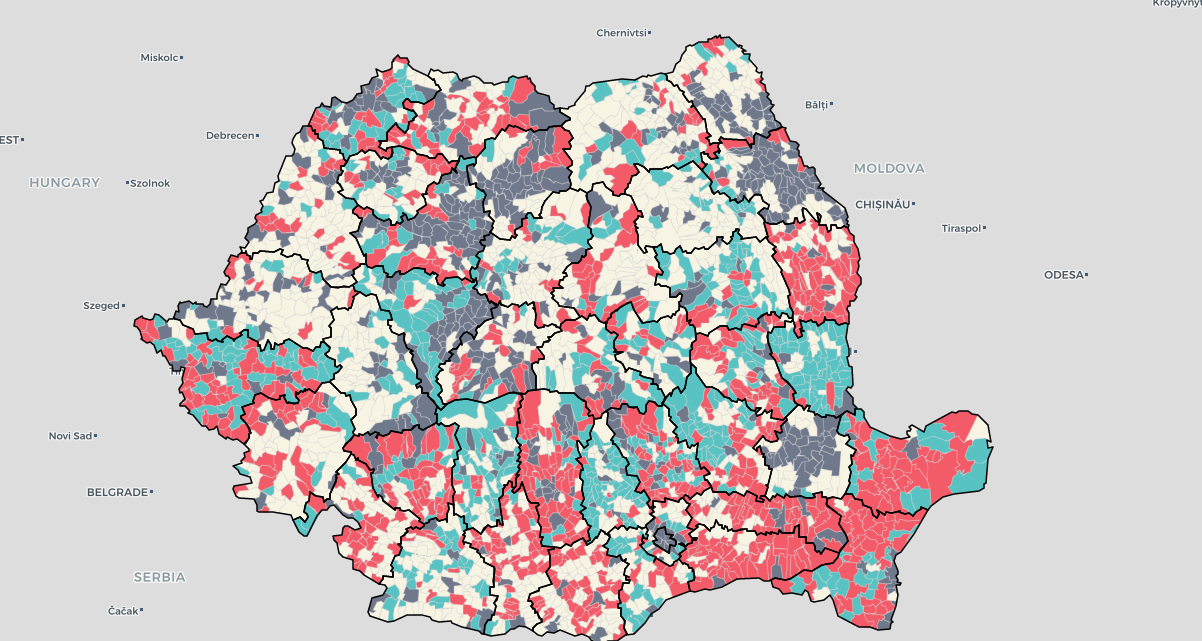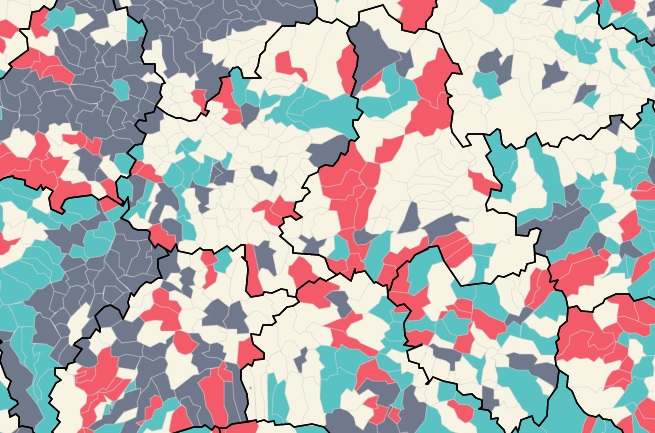The water supply network of more than half of Romanian municipalities and small towns does not meet the standards specified by law, meaning that in 892 villages and cities, people drink water unfit for consumption, an analysis by the Romanian Recorder reveals. The journalist from the Recorder, in collaboration with the county public health directorates (DSP), collected and analyzed data on the water supply network of 1,568 Romanian municipalities and small towns. The results of the two-month-long project are very disappointing.
According to the Recorder, the Romanian law regulating the water supply network specifies that the state undertakes to examine, at regular intervals, the quality of the water in all households connected to the public water system. It also orders that this examination must be done by the operator (the city hall or private company) and by the county public health directorate. The same law sets the legal standards for drinking water – defines an allowable amount of contaminants in the water. If the amount of harmful substances in the drinking water exceeds these parameters, then the drinking water shall be declared unfit for human consumption and its consumption shall be prohibited.

However, according to the Recorder, these analyses are rarely done, especially in rural areas, and the results of the examinations are even more rarely published. The DPS and the water supply operators do not communicate the results to citizens even if the water quality falls below the set parameters, meaning that several thousand Romanians are drinking unhealthy water.
According to the paper, Romania’s water supply networks are divided into two categories: large supply areas, mainly in cities, and small supply zones, covering mostly rural areas. They chose to analyze the small zones, which supply drinking water to 3 million Romanians, as they thought these are more vulnerable. “The analyses that establish water quality are done in rural areas only a few times a year, and the results are often not communicated to the people. By comparison, samples from dozens of different points from the system that supplies Bucharest are collected daily, and the results are immediately published on the internet and can be consulted by anyone,” they wrote.
The journalist analyzed the water supply system of 1,568 municipalities and small towns with the help of DPS. According to them, the water system in 892 municipalities does not meet the standards set by law, that is, the amount of nitrate, ammonium or fecal bacteria exceeds the allowable values, so drinking these waters can be unhealthy.
The collected data is available for everyone here. On the interactive map, the municipalities where the drinking water is unfit for consumption are marked red. Blue means that the quality of the water meets the legal parameters, while the villages where the DPS did not examine the quality of the water in 2019, or where there are no water systems, are marked white. The settlements with more than 5,000 inhabitants and settlements that are connected to an urban water network are marked black.
If we take a closer look at the map, we can see that the quality of water in Transylvania is better than in the Eastern and Southern parts of Romania; in Transylvania, there are fewer red marks. Southern counties like Vaslui, Tulcea or Călărași are almost completely red. However, a good part of Maros (Mureș), Hunyad (Hunedoara), and Hargita (Hargitha) counties is white, meaning there are no water supply systems there or the quality of the water was not analyzed in 2019.

If we look at the Szeklerland, we can see that Harghita County has the most villages marked in red – Parajd (Praid), Korond (Corund), Székelyvarság (Vărșag), Farkaslaka (Lupeni), Oroszhegy (Dealu), Székelyderzs (Dârjiu), Kányád (Ulieș), Felsőboldogfalva (Feliceni), Gyergyócsomafalva (Ciumani), Ikland (Icland), Homoródalmás (Merești), Csíkszentimre (Sântimbru), Csíkszentsimon (Sânsimion), Csíkszentkirály (Sâncrăieni) and Gyimesfelsőlok (Lunca de Sus) are the municipalities or small towns where the water is unfit for human consumption. In Maros County, the quality of the water does not fit the parameters set by law in the following municipalities: Gödemesterháza (Stânceni), Déda (Deda), Holtmaros (Lunca Mureșului), Beresztelke (Breaza), Mezőtóhát (Tăureni), Mezőszengyel (Sânger), Ádámos (Adămuș), Erdőszentgyörgy (Sângeorgiu de Pădure) and Gyulakuta (Fântânele).
In Kovászna (Covasna) County, only Vargyas (Vârghiș), Barót (Baraolt), Bölön (Belin), Málnás (Malnaș), Mikóújfalú (Micfalău), Gidőfalva (Ghidfalău), Csernáton (Cernat), Kézdialmás (Mereni) and Lemhény (Lemnia) municipalities have problems with the drinking water.
Title image: In almost 900 municipalities, the quantity of nitrate, ammonium or fecal bacteria exceeds the allowable value. Photo: www.constantadeazi.ro/